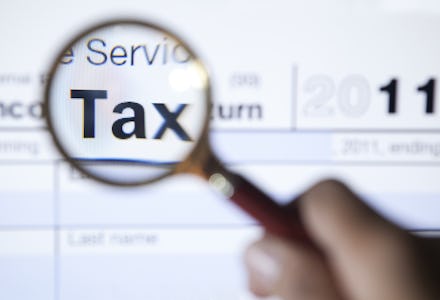Quarterly estimated taxes: Here's when they're due, who owes them — and how to pay.

One in three Americans now earn part or all of their income from non-traditional and freelance work, according to the Bureau of Labor Statistics.
That's a whole lot of folks working as consultants, driving for Uber, renting out their pads and otherwise riding the gig-economy train.
While freelance work is a great way to make fast cash, it complicates your tax burden. Not everyone may realize it, but most self-employed people have to pay quarterly estimated tax — and so do many who earn money outside of a regular job.
Anyone earning money outside of a form W-2 should check to see if they owe estimated taxes, accountant Eric Nisall of Accountlancer wrote in an email. You may need to act fast, as these quarterly taxes are due to the Internal Revenue Service on Sept. 15, Jan. 15, April 15 and June 15.
You can easily pay the IRS online. But how do you know if you owe anything?
"This isn't only for people with side business, which is a given," Nisall said. "People who make profits off of rental properties or receive significant dividends or capital gains distributions from investments held in taxable brokerage accounts should be doing this as well."
If you earn more than $600 from a single source, that employer or firm is required to send you a 1099 form — but unlike with a W-2, tax is not automatically withheld.
"Since there is no withholding ... paying estimated quarterly tax not only keeps payments manageable (versus a lump-sum payment when filing the tax return) but also helps limit any underpayment penalties," he said.
In general, anyone who expects to owe the IRS $1,000 or more for the year should send in an estimated tax payment.
If you're unsure whether that's you, it's better to be safe than sorry, Nisall said. To determine how much to pay, you can use your tax bracket to estimate how much tax you owe — or use a handy tax calculator to do the hard work for you.
Then you can mail in a check or pay online directly from your bank account. If you'd like, the IRS is able to store your bank account information so you don't have to input it every time you pay.
Still confused?
The IRS has a useful FAQ where you can find out exactly how to file your estimated taxes. Other sites, like TurboTax, have useful tips on figuring out how much you really owe and other nuances you might not realize: For example, while most people take the total tax owed and just divide by four, not everyone owes the equal amounts each quarter.
Now, if you discover that you have underpaid past taxes by more than 10% of the total amount owed — or $1,000 — you likely have to pay penalty fees.
You can file those using form 2210 through the IRS. Penalties are why it's generally better to overpay than underpay on quarterly taxes: If you overpay, you'll simply end up with a tax refund.
Finally, to get ahead of the curve, many accountants recommend setting aside between 20% and 30% of any untaxed income you receive, long before taxes are due.
One smart tip? Consider setting up automated transfers, so money regularly goes into a separate savings account every month without you having to think about it.